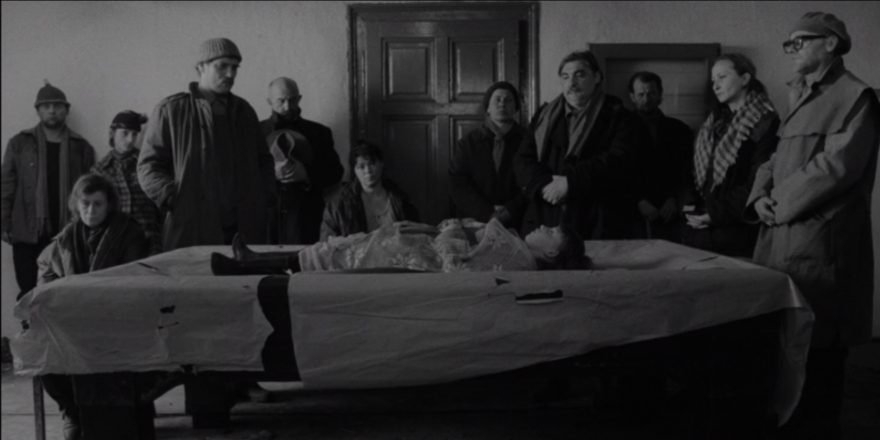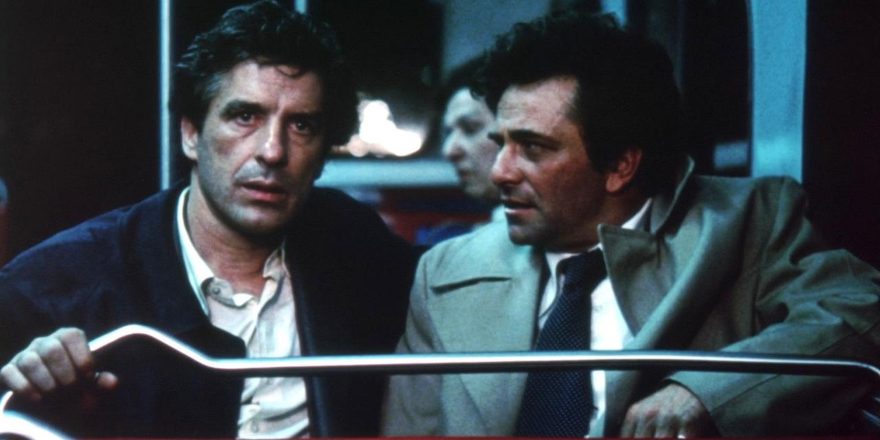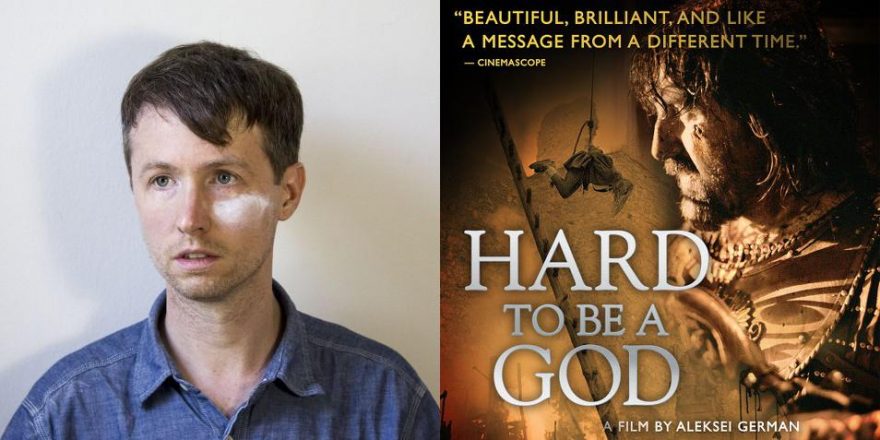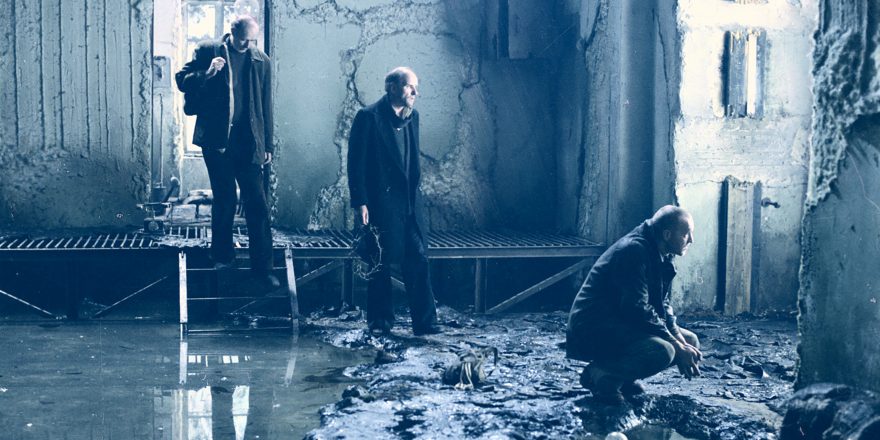Quarantine has felt a lot like slow cinema. The hours in one room, and then the hours in the room next to it. The sleeplessness and excess energy without anywhere to store it. The lack of structure which has developed, in its way, a new structure.
Paul Schrader, author of Transcendental Style in Film, started a recent interview saying, “If you come to expect action, you’re not going to get it. … Transcendental style is essentially a withholding device. … You’re creating dead time.” Slow cinema furthers the transcendental style; is its logical conclusion. Where transcendental style can build to a flourish or climax, as Schrader cites in the case of Ozu or Bresson, slow cinema is an end in itself. Action and story are stripped away, until there is only time. The genre finds its high-water mark in Hungarian filmmaker Béla Tarr and his seven-hour-plus film, Sátántangó.
I thought a lot about this movie — one Susan Sontag said she would watch once a year for the rest of her life — during the first few months of lockdown. With no choice but to shelter in place indefinitely, my friend Ross and I decided to seek out films we had not yet seen, ones that were dense and long, ones we had avoided when we still had credible excuses. These were the films we always planned to tackle “next” or “soon,” when we could “find the time.” From the start, Sátántangó was our Holy Grail, the one we jokingly trained for — watching other films in order to get to this one. Everything before was the build-up.
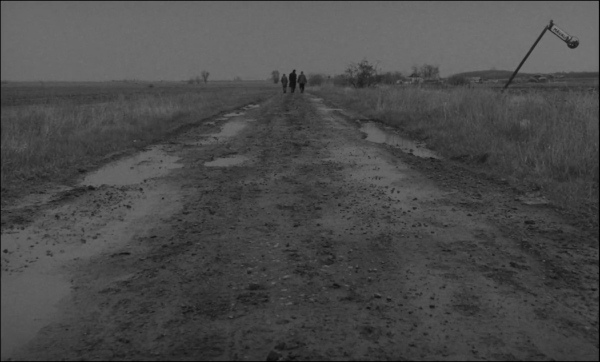
Based on the 1985 novel of the same name by László Krasznahorkai (who co-wrote the film’s script with Tarr), Sátántangó follows the disintegration and migration of a small farming community in rural Hungary. But describing the plot to explain the film is to miss the point. Tarr said in a recent interview tied to the film’s re-release, “Most films just tell the story, action, fact, action, fact, I don’t fucking know what. For me, this is poisoning the cinema because the art form is pictures written in time.” So while things do happen — and they do — they seem incidental to the film and Tarr’s project.
Sátántangó’s overture is an eight-minute tracking shot that sets the tone; the camera watches from a distance, moving in unison with cattle as they plod along, one after the next, in a barren wasteland. In stark black and white, we are introduced to characters, each and all past hope, with no glimmer of improving their circumstances. One man cheats with another’s wife and soon they conspire together to rob their neighbors, every interaction a zero sum game. Across the road, another man watches these petty grievances unfold through binoculars that emulate the camera’s eye, noting each shred of minutiae in a notebook. They do nothing, and he studiously scribbles it down for no one to read.
The film is divided into 12 chapters and its third is where Tarr makes his mission statement clear. Across an hour of screen time, the spying man, an obese doctor, finishes his bottle of alcohol and sets out to replenish it. That is the chapter’s action, its narrative thrust, and in this time he: argues with and casts out his caretaker, collapses to the floor reaching for something, lies there for a while, pours the last drops of his liquor from a bigger container into a smaller one and finally into a glass, drinks those last drops, sets out into the pouring rain (a rain that beats the characters down across the film’s runtime), bums two cigarettes from prostitutes hanging out in an empty barn, finally arrives at the bar in the still-pelting rain only to inadvertently scare a young child and consequently follow her to make amends (to no avail), and ultimately collapses in the woods from exhaustion/desperation/hopelessness after calling out for help to passersby who do not hear him. The next morning, he is thrown in the back of a horse-drawn carriage and carted off, presumably back to his house, without the alcohol. That hour of screen time has been these five months of quarantine.
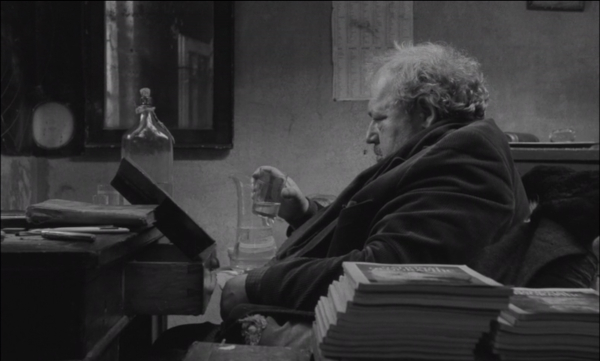
Tarr makes time elastic in Sátántangó. The events that unfold are at once shorter, as we do not literally see every actual second of the doctor’s day transpire, and somehow far longer, as we feel the duration of his time spent lying on the floor — seconds as hours — or the endless walk toward the town bar that scarcely seems to get closer. Even when two characters talk as they would in any film, we feel time, the time-ness of the exchange, its existence in time. J. Hoberman wrote that Sátántangó is “constructed out of morose chunks of real time, is not so much narrative as experiential.” In a sense, we too have transcended narrative linearity in our daily lives. Time moves, the world has stopped. In the past, I may have grown weary or impatient with Sátántangó’s more trying moments. Watching the film now, I briefly forgot about everything beyond the screen as that carriage receded from view and reached its vanishing point.
The structure of Sátántangó echoes its title, the six steps forward, six steps back of the tango. There is progress: The group moves to a nearby abandoned mansion at the suggestion of Irimias, a supposed soothsayer who is more likely a grifter and a charlatan. It is unclear if the move will be anything of substance for the townspeople; they seem to know they are being swindled, yet accept it willingly because it is better than nothing, than having to make a decision themselves and live their own lives. Things might improve for them; maybe this will be a new start.
The film closes where it begins, with the doctor sitting alone at his desk, looking out at nothing. He hears distant church bells and believes it could be divine providence. He follows the sound up the hill, seeking salvation, an answer, something, but finds only a deranged man ringing the church bells and raving, “The Turks are coming.” Taking in the scene, the doctor walks back down the hill and boards up his window, his last connection to the outside world, until he is in total darkness, his own private abyss.
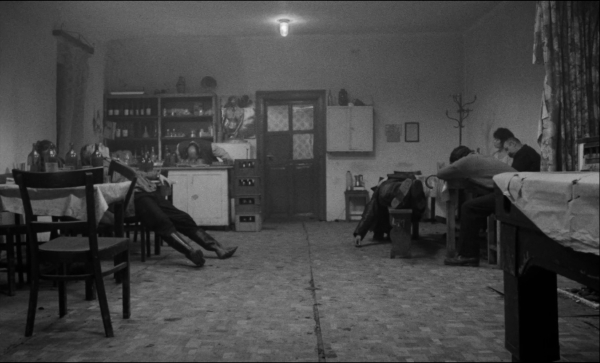
Sátántangó adopts an undeniably nihilist viewpoint. No one is coming. The best the doctor can hope for is a newly replenished bottle of liquor at story’s end, a mere solace among the wreckage. But as the days passed after viewing the film — and it’s one that stays with you long, long after viewing — I began to think about the person behind Sátántangó. Tarr originally wanted to make the film in 1985, right after the publication of Krasznahorkai’s book, but the politics in Hungary at the time prevented it. As soon as the Soviet Union fell, Tarr returned home from abroad and set out to make the film, completing it four years later, in 1994. And though its contents speak to a bleak future, its very creation speaks to a brighter one, one devoid of censorship and toward a free artistic expression. For a movie about the apocalypse, Sátántangó is awash, in its way, with hope. Sontag must have felt something in those seven hours she wanted to recapture and relive, again and again. Tarr said in that same interview, “As a filmmaker, you have to believe in the people — in their power — because if you do not believe in the people, then why do you make film … for what?”
It took me an entire day to watch Sátántangó, with short breaks for food, sunlight and exercise. I turned off our air conditioner, because I wanted to hear every aspect of the sound design, and so I spent the day sweating in the thick summer heat. My wife, having received a notification from our internet provider alerting us we were nearing our monthly allowance, asked me what I was doing on August 4th, the day our Wi-Fi use spiked.
A few days later, I talked about Sátántangó with Ross. Though it cannot compare to seeing the movie in a theatre surrounded by people, it’s a consolation to still share art in a time when it feels like we’ve never been further away from each other. He told me what he thought about it, how it made him feel, what he thought the film was trying to say, and I did the same. It was a small act, one we used to take for granted, as it was couched between the rest of our packed days. We hold this space every week to commune and listen to each other, to hear how someone else sees. These calls provide a ballast to the week, it gives us a sense of anticipation when so much else is unknown. It’s these new paths that keep us going when most of everything we know and need and love has disappeared overnight. Some of it may never come back.
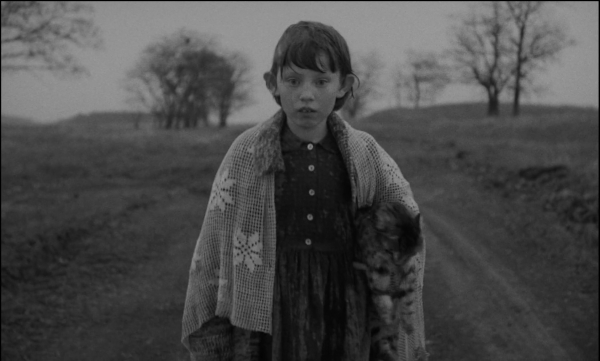
And so we change. We watch these long movies not only for pleasure or because we’re searching for structure, but also because these movies keep us connected. They invent time — a fictional version of time that runs alongside our everyday. While Ross and I talk about the movies, we also talk about the news, what we’re reading right now, about our families and how we’re holding up. We watch in order to look forward, to keep our hope, to answer Tarr’s question, “For what?”



